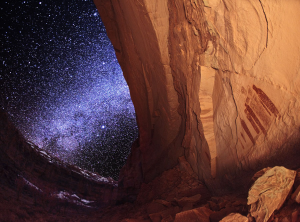Ubu is playing Master of Magic, Steven’s been playing Masters of Orion, and thanks to the Rampant Coyote I even downloaded the iPod Touch versions of Secret of Monkey Island 1 and 2 for my kids. There’s some weird retro gaming bug in the air!
Author: Otaku-kun
-
a guild of their own
It’s amazing how many people I know who play World of Warcraft. Even Shamus is getting sucked back in 🙂
I was thinking aloud a while back about how I’d love to start a guild named for Haibane Renmei. Most of my toons are Alliance, so I think a Horde guild would be fresher, and I have one alt on Staghelm I’d be willing to move to just about anywhere. The question is, is anyone else interested? The focus would be to stock a bank for leveling alts and grouping for end-game raids.
The main question is what server is would be, ideally a PvE server in CST to make it maximally convenient for everyone to be online roughly at the same time. I’d welcome suggestions as to what server we should pick. How many of you would be willing to bring a Horde toon or start a new one if we got this rolling? chime in on comments…
(as far as Cata content goes, like everyone else I am itching to play a Worgen, but for my Alliance toons I am content to stay on Staghelm as that’s where a lot of my friends are.)
UPDATE: We are officially Haibane Renmei on Blackhand! Here is the official Guild page.
-
“ancient” is a human concept, not a universal one
I was totally mesmerized by the APOD a few weeks ago:

The Ghost Panel and the Milky Way There are two kinds of antiquity here – one cosmic, the other human. Of course the age of the foreground is insignificant compared to the age of the background, but I confess to being more viscerally awed by the former.
I think it’s impossible to really relate to things beyond human timescales. The idea of something being “ancient” has no meaning if it predates our human comprehension. The Neanderthals disappeared 30,000 years ago, which is probably really the farthest back we can reflect on. When we start talking about human forebears of 100,000 years ago and more, it becomes more abstract – that’s why it’s no coincidence that the Battlestar Galactica series finale set the events 150,000 years ago, well beyond even the reach of mythological narrative.
-
torrenting with no fear
I’ve become markedly more paranoid about bittorrent in the past few months, with all the news of systematic, widescale lawsuit shakedowns and the craven willigness of ISPs to hand over private IP address data. This is a perfect case study of how not having anonymity and privacy can lead to outright persecution, even if you are totally innocent of any copyright violations (fair use or not).
I don’t use BT for much beyond catching up on anime and various TV shows. Netflix doesn’t always have what i want, and even if it does I have to compete with the rest of my family for slots in the queue. And trying to catch things when they are broadcast is essentially impossible (no DVR, either). Ultimately I have to either be able to time shift or not watch at all; and paying more money above and beyond the cable TV and netflix subscription is just too high a barrier.
Unfortunately, the threat posed by the copyright tyrants is no longer negligible. So I do watch less and less TV nowadays (and play more Warcraft, read books, etc*). Though I did just discover CastTV which was indispensable for catching up on Doctor Who Season 5…
What I want is a way to torrent without losing my privacy. I did try PeerGuardian, which is a constantly updated realtime list of suspicious IP addresses to blacklist, but it never worked for me – the blacklist just doesn’t download from their server. I suspect the load is too high for a volunteer open source project to handle. The more compelling solution seems to be a paid proxy service, such as BTGuard, which is surprisingly affordable. If I understand BT correctly, even using a private tracker like BakaBT won’t protect your IP from the Bad Guys, so I am pretty sure I am going to have to bite the bullet on this one. BTGuard is intended primarily for torrenters, but I might as well also start using proxies for my casual browsing as well. There’s also the TOR project which purports to protect your web traffic from being intercepted… not sure I entirely understand that yet, but worth looking into.
I guess I’m not really sure how paranoid I should be. But the present system of just blindly and openly surfing and torrenting doesn’t seem sustainable.
*all these hobbies of course are competing for the tiny sliver of time I have late at night to myself, since my waking hours are dominated by family and work.
-
a hackintosh for me, iphone applications for thee
 I’m embarking on a hackintosh project because I want to dabble in some iPhone/iPod application development. This post is really a sort of notepad for some of the resources I am researching to help with this. The hardware is a refurbished Dell Mini v10, and I can report that it gets 2 fps (Dalaran) to 20 fps (out in the wild) playing Warcraft. 🙂
I’m embarking on a hackintosh project because I want to dabble in some iPhone/iPod application development. This post is really a sort of notepad for some of the resources I am researching to help with this. The hardware is a refurbished Dell Mini v10, and I can report that it gets 2 fps (Dalaran) to 20 fps (out in the wild) playing Warcraft. 🙂I was a moderately good citizen and snagged a legitimate copy of Snow Leopard off Amazon – the upgrade disc, mind you. The OSX installation guides vary but here are the main ones (slightly contradictory):
Mech Drew: http://osx.mechdrew.com/guides/
Gizmodo: http://bit.ly/ItgcC
Lifehacker: http://bit.ly/6sdVx
As far as learning how to do app development, I will use the courses on Apple ITunes University and also I bought this book.
unfortunately, none provide a simple way to add an OS/X install as a multiboot option. I used a freeware partition software to create a new 80 GB partition, so hopefully I can use that for OS/X but I’m really treading on new ground here. Ideally I can multi-boot into XP or Snow Leopard.
If anyone has any words of wisdom or advice, please do let me know! This isn’t for the faint of heart, clearly.
-
Accelerated Medical Imaging Workshop in Madison WI on June 17th – 18th
The 2nd annual accelerated imaging workshop at UW Madison is next week, and should be a great event. There are scheduled speakers from Mayo Clinic, Northwestern, UIUC, Berkeley, Harvard, the NIH, and GE Healthcare (among others). If you think you might be able to attend, the free registration deadline is Saturday June 12th, otherwise you can register on-site for a nominal fee. Here’s the registration form, which you can fax or email in.
The International Center for Accelerated Medical Imaging at the University of Wisconsin, Madison, USA and the Dept. of Diagnostic Radiology, Medical Physics, at the University of Freiburg, Germany are co-hosting the 2nd Workshop on Accelerated Medical Imaging ‘Rapid MR Imaging – Beyond the Nyquist Limit’.
Objectives of this workshop are to discuss the current state of the art accelerated imaging concepts and applications, roadblocks to clinical applications and strategies to effectively address these limitations.
- Fundamentals of the Constrained Reconstruction Rainbow
- State-of-the-Art Concepts and Applications in MRI and other modalities
- Rapid Quantitative Imaging
- Performance Metrics – Connecting Imaging Science with Radiology
- New Hardware Developments
Invited speakers will present keynote lectures on pertinent topics with further presentations by contributed papers. The workshop in Madison will also be tailored towards students’ education.
Extended poster viewing and discussion sessions are an integral part of the scientific program and will allow discussions about new concepts.The workshop will take place in Madison, WI at the Health Science Learning Center (HSLC), which is located on the University of Wisconsin-Madison campus adjacent to the UW Hospital & Clinics.
The workshop announcement in pdf format can be found here.
If you don’t want to download the PDF of the program, I’ve embedded it below the fold. Also check out the official workshop website on the UW Madison website for more details.
-
Global and local fMRI signals driven by neurons defined optogenetically by type and wiring
Ars Technica has a nice writeup about a paper in Nature which isolates the BOLD signal from a specific type of neuron:
With everything in place, the researchers confirmed that firing an impulse in excitatory neurons produced a signal that matched nicely with the ones observed during regular experiments. Putting the channelrhodopsin into inhibitory neurons produced a small BOLD signal in the area where the light triggered an impulse, but it was surrounded by a halo of depressed activity, consistent with the neurons’ inhibitory role.
But the BOLD signals weren’t limited to the area where the light triggered activity. With a slight delay, signals started showing up in other areas of the brain, with the precise locations changing based on where exactly the activity was triggered. The authors indicate that these additional signals provide an indication of the brain’s wiring—the nerves at the site of the initial activity were simply doing what they normally did, and communicating with other areas of the brain. With enough time, they suggest, their technique could be used to map functional connections throughout the brain.
It’s impressive work that really takes aim at the foundation of fMRI and signal origin rather than most of the empirical neurologic applications that we usually see in the literature. I’m sure there must have been some work at this years’ ISMRM that went in a similar direction…
Here’s the full paper in Nature. Abstract:
Global and local fMRI signals driven by neurons defined optogenetically by type and wiring
Despite a rapidly-growing scientific and clinical brain imaging literature based on functional magnetic resonance imaging (fMRI) using blood oxygenation level-dependent (BOLD)1 signals, it remains controversial whether BOLD signals in a particular region can be caused by activation of local excitatory neurons2. This difficult question is central to the interpretation and utility of BOLD, with major significance for fMRI studies in basic research and clinical applications3. Using a novel integrated technology unifying optogenetic4, 5, 6, 7, 8, 9, 10, 11, 12, 13 control of inputs with high-field fMRI signal readouts, we show here that specific stimulation of local CaMKII?-expressing excitatory neurons, either in the neocortex or thalamus, elicits positive BOLD signals at the stimulus location with classical kinetics. We also show that optogenetic fMRI (ofMRI) allows visualization of the causal effects of specific cell types defined not only by genetic identity and cell body location, but also by axonal projection target. Finally, we show that ofMRI within the living and intact mammalian brain reveals BOLD signals in downstream targets distant from the stimulus, indicating that this approach can be used to map the global effects of controlling a local cell population. In this respect, unlike both conventional fMRI studies based on correlations14 and fMRI with electrical stimulation that will also directly drive afferent and nearby axons, this ofMRI approach provides causal information about the global circuits recruited by defined local neuronal activity patterns. Together these findings provide an empirical foundation for the widely-used fMRI BOLD signal, and the features of ofMRI define a potent tool that may be suitable for functional circuit analysis as well as global phenotyping of dysfunctional circuitry.
-
Self-Assembled Plasmonic Nanoparticle Clusters
(In addition to MRI and medical physics, it’s worth keeping an open mind and keeping tabs on various other branches of physics and science. To that end, I’ll highlight interesting papers or research that strikes my fancy from time to time.)
Eric Berger aka SciGuy, a science columnist at the Houston Chronicle, points to a new paper in Science that introduces new “metamaterials” which can manipulate light, which are easy to fabricate (in principle). Eric makes the analogy to this being as much a game-changer as lasers were when they were invented almost exactly 50 years ago.
Here’s the abstract of the paper:
Self-Assembled Plasmonic Nanoparticle Clusters
The self-assembly of colloids is an alternative to top-down processing that enables the fabrication of nanostructures. We show that self-assembled clusters of metal-dielectric spheres are the basis for nanophotonic structures. By tailoring the number and position of spheres in close-packed clusters, plasmon modes exhibiting strong magnetic and Fano-like resonances emerge. The use of identical spheres simplifies cluster assembly and facilitates the fabrication of highly symmetric structures. Dielectric spacers are used to tailor the interparticle spacing in these clusters to be approximately 2 nanometers. These types of chemically synthesized nanoparticle clusters can be generalized to other two- and three-dimensional structures and can serve as building blocks for new metamaterials.
and here’s a link to the full text of the article. As with lasers when they were first introduced, it’s a challenge to the imagination to envision how this might be used or applied. What possible medical imaging applications could this be exploited for? That’s the billion dollar question 🙂
-
sigh. del Toro leaves THE HOBBIT
here’s the bad news from AICN. The uncertainty over the rights to the film die to MGM studio’s pending sale resulted in too many delays, and del Toro has a lot on his plate.
Will we ever see the Lonely Mountain in film?
-
Scotty’s send-off
The remains of James Doohan have been sent into space (briefly):
UPHAM, N.M.–The cremated remains of actor James Doohan and U.S. Mercury astronaut Gordon Cooper soared to suborbital space yesterday aboard a rocket.
It was the first successful launch from Spaceport America, a commercial spaceport being developed in the southern New Mexico desert.
The Canadian-born Doohan was most famous for portraying engineer Scotty on Star Trek. Cooper, one of the original Mercury astronauts, had been in space twice during his lifetime.
Doohan died in July 2005 at age 85. Cooper, who first went into space in 1963, died in 2004 at age 77. Doohan inspired the legendary catchphrase “Beam me up, Scotty” – even though it was never actually uttered on the popular television show.
Suzan Cooper and Wende Doohan fired the rocket carrying small amounts of their husbands’ ashes and those of about 200 others at 8:56 a.m. local time from the launching grounds near Truth or Consequences, N.M.
During the 15-minute flight, the rocket separated into two parts and returned to Earth on parachutes – coming down at the White Sands Missile Range – with the capsules holding the remains. The maximum height reached was about 116 kilometres. Capsules containing the ashes are retrieved, mounted on plaques and given to relatives.
While nicely symbolic, I think a far more powerful memorial to Doohan was his final turn as Scotty in the TNG episode Relics. In a way, that episode really closed the book on the old Star Trek for me. And whose heart didn’t leap when Scotty walked onto the holodeck and recreated the Enterprise bridge, “no bloody A, B, C, or D!” ? It’s hard not to think that Scotty’s words to Picard on that recreated bridge of legend weren’t as much coming from Doohan himself.
